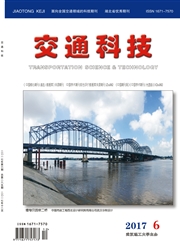

 中文摘要:
中文摘要:
基于核心-边缘理论建立了区域旅游发展水平的空间自相关模型,对中国旅游业发展水平的区域核心-边缘空间格局时空演化和结构形态进行了分析,揭示了区域旅游发展水平的空间差异和区域经济空间格局时空演变模式。结果表明,中国旅游业的发展将长期处在核心-边缘空间结构中,其核心区与边缘区之间差异较大,空间格局的演变虽然以集聚型极化发展为主,但是扩散力量正在不断增强,其空间格局形态也逐渐由集聚型向扩散型演变,表现为集聚与扩散并存的空间格局形态。
 英文摘要:
英文摘要:
A spatial autoeorrelation model based on the core- periphery theory was proposed to analyze the spatial structure forms and spatiotemporal evolution process of the levels of tourism development in China and revealed the spatial discrepancy of regional tourism development and evolution mode of regional economic structure. It was found that the spatial core - periphery structure of tourism industry in China would keep unchanged for a long time, and the gap between the core region and the periphery region would increase. The centralization of core regions was the major pattern of tourism development. However, it was also found that the diffusion process was accelerating, and the spatial pattern changed from centralization to diffusion gradually, resulting in a mixed spatial pattern in which centralization and diffusion coexisted.
 关于李军:
关于李军:
 同期刊论文项目
同期刊论文项目
 同项目期刊论文
同项目期刊论文
 Dynamic Competition and Cooperation of Road Infrastructure Investment of Multiple Tourism Destinatio
Dynamic Competition and Cooperation of Road Infrastructure Investment of Multiple Tourism Destinatio Modal Choice of Recreational Tourists under Regional Transportation Integration: A Case Study of Pea
Modal Choice of Recreational Tourists under Regional Transportation Integration: A Case Study of Pea 期刊信息
期刊信息
